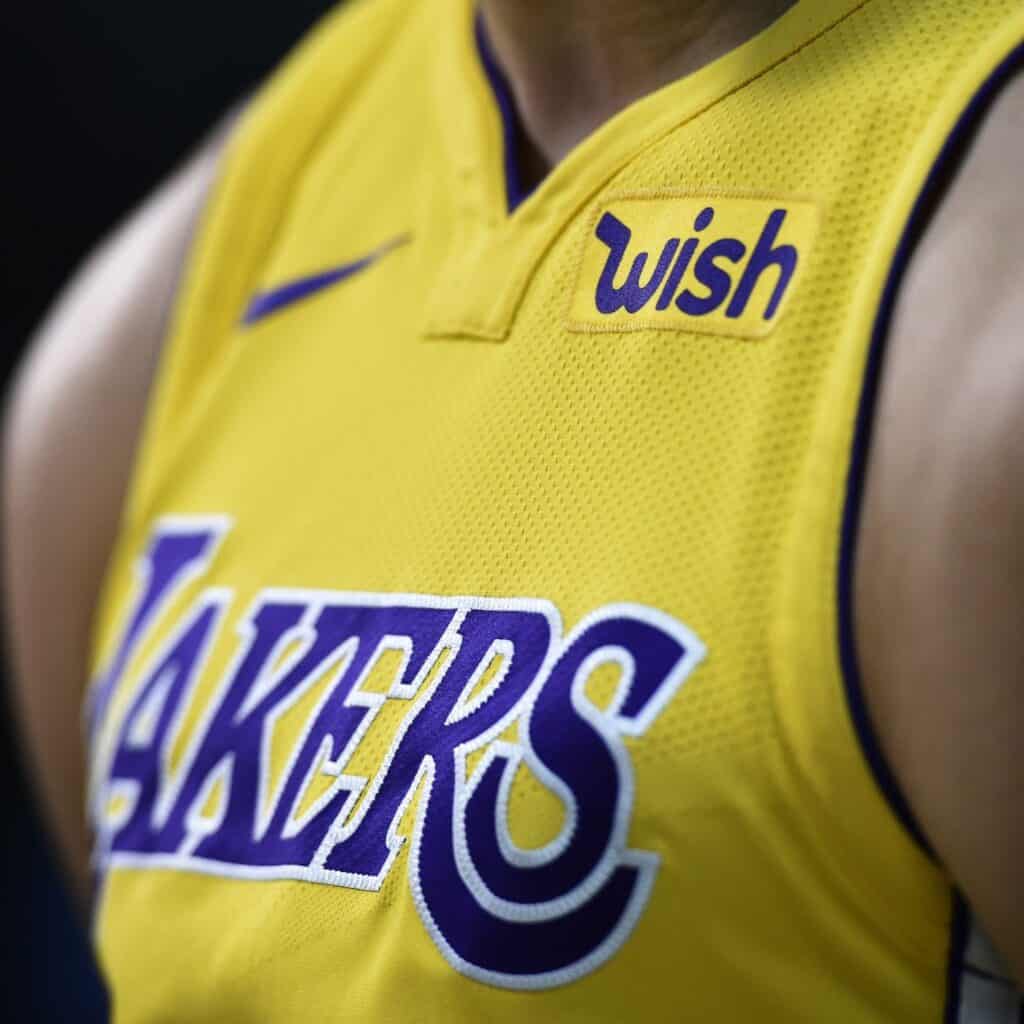The NBA began a 3-year pilot program giving teams the initiative to allow sponsor patches on their jerseys starting from the 2017-18 season. Allowing sponsors on jerseys was being discussed as early as 2012; the NBA was the first of the major North American leagues to allow jersey sponsors. The sponsor patch is placed on the top left of the chest area of the jersey. The NBA made the jersey sponsor patch program permanent in 2019. Having a jersey sponsor is not a requirement; for example, the Portland Trailblazers have started the 2022-23 season without a jersey sponsor (although they’ve had one previously).

How does the jersey sponsor program work?
The jersey sponsor program is negotiated between teams and companies who would like to sponsor them. It is subject to league approval, who only allow one sponsor, and some sponsors are not (yet) allowed (ex: bookmaking companies). The jersey sponsor patch has a very specific size: 2.6867 inches by 3.25 inches, and it is placed on the front left shoulder of the jersey.
Teams can negotiate length and price of the sponsor deal, either by approaching companies or vice versa. Should a team not wish to have a patch, or has not signed a deal, they are more than free to do so. The length of initial deals did not exceed 3 years (due to the pilot program), and were often in the $3 million to $5 million range. Since then, the length of deals as well as the cost have increased, with major deals such as the one between the Los Angeles Lakers and Bibigo, and the Golden State Warriors and Rakuten, are north of $20 million every year.
So far, the sponsorship program has not been one that megacorporations have ventured into; it has been a mixture of large corporations as well as regional companies. Many of the companies who have inked jersey sponsorship deals have come from the finance industry and the technology industry. Some teams have had at least 2 sponsors so far (separately of course), while some companies like Motorola have sponsored more than one team. The sponsorship deals usually extend beyond just a jersey sponsor patch, but rather a part of a larger partnership. For example, the Phoenix Suns and their jersey sponsor PayPal have also worked together to integrate PayPal into the stadium experience to increase and improve fan engagement.
How important is sponsorship revenue to the NBA and NBA teams?
Sponsorship revenue is a big moneymaker for the NBA: the 2020-2021 season saw the NBA make a reported $1.46 billion from sponsorships and partners. That figure is roughly 15% to 20% of total basketball-related income. Compared to the NFL, which has a much larger domestic audience, the NBA is quite close to the NFL in terms of sponsorship revenue, with the NFL just ahead with an estimated $1.62 billion in the 2020-21 season. The impact of COVID-19 on other sources of revenue, mainly ticket sales, led to an increased reliance on sponsorships. An increased focus on sponsorships may lead to a higher sponsorship revenue for future seasons as well as a higher ratio of sponsorship revenue to overall basketball-related income.
The jersey sponsor program has been a big part of the increase in overall sponsorship revenue. The program is expected to bring in north of $200 million in revenue, and as deals expire, new deals are being signed at higher price tags. The impact of introducing the jersey sponsor program also has caused an increase in sponsorship revenue across the board: a report found that from the 2016-17 season (before jersey sponsors were introduced) up until the 2020-21 season, there was a 70% increase in sponsorship revenue in the NBA. While the jersey sponsor program is not directly attributable to that, experts believe that the success of the program spurred companies to enter partnerships and sponsorships with the NBA and its teams where possible.
How has the jersey sponsor program evolved?
The jersey sponsor program was being considered as early as 2012, and was piloted for the start of the 2017-18 season. The introduction of the jersey sponsor program also coincided with Nike’s takeover as the manufacturer of NBA jerseys. The jersey sponsor program was introduced for 3 years at first, with teams signing deals with sponsors for up to 3 years. The program was made permanent for the 2019-2020 season after its profound success.
Alongside the jersey sponsor, the NBA approved for teams to also allow sponsors to take up space on their practice jerseys starting from the 2020-21 season. These sponsor spaces are placed up and front on the practice jersey, and are noticeably larger. Midway through the 2021-22 season, the NBA approved the shooting shirt patch program, allowing teams to place sponsors on the sides of their shooting shirts and warm-up jackets. Importantly, teams were allowed to negotiate deals with a second sponsor to add the 3-inch by 3-inch square patch. Adding sponsors to jerseys seemed like a natural step for the NBA; they had to look no further than the WNBA, who had a successful run of jersey sponsors. European soccer leagues are also rife with jersey sponsors. The NBA teams and their sponsors have also been quite satisfied with the jersey sponsor program, and have made strides to extend and expand it. So, what’s next? Will we see bigger sponsor patches, or maybe more sponsors placed throughout? And what else is left that the NBA can monetize with ad and sponsor revenue? As long as the revenue continues to roll in, the NBA will also look to maximize their gains.
